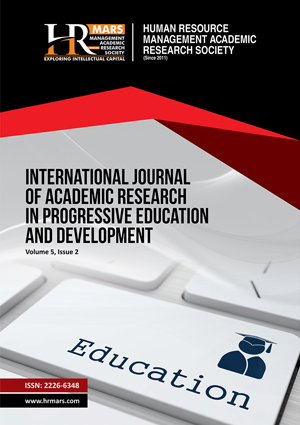Abdullahi, M., Ayub, A. F. M., Sulaiman, T., & Manaf, U. K. A. (2021). Predicting mathematics students’ continuance intention toward learning mathematics. Asian Journal of University Education, 17(3), 192-202.
Anton, H., Bivens, I. C., & Davis, S. (2021). Calculus. John Wiley & Sons.
Ariadna, G., & Natalia, S. (2022). Mathematics can be fun. Service-Learning innovation project at the University with primary school students. Revista Complutense de Educacion, 33(3), 425-434.
DeLashmutt, K. (2007). A study of the role of mnemonics in learning mathematics. Math in the Middle Institute Partnership Action Research Project Report, University of Nebraska – Lincoln.
Drushlyak, M. G., Semenikhina, O. V., Proshkin, V. V., & Sapozhnykov, S. V. (2021). Training pre-service mathematics teacher to use mnemonic techniques. Journal of Physics: Conference Series, 1840(1), 012006.
Eckler, A. R. (2008). Mnemonics for number sequences. Word Ways, 41(4), 16.
Farrokh, P., Vaezi, H., & Ghadimi, H. (2021). Visual mnemonic technique: An effective learning strategy. GIST–Education and Learning Research Journal, 23, 7-32.
Finesilver, C., Healy, L., & Bauer, A. (2022). Supporting diverse approaches to meaningful mathematics: from obstacles to opportunities. In Enabling Mathematics Learning of Struggling Students, 157-176. Springer, Cham.
Flegg, J., Mallet, D., & Lupton, M. (2012). Students’ perceptions of the relevance of mathematics in engineering. International Journal of Mathematical Education in Science and Technology, 43(6), 717-732.
Hunt, N. (2010). Using mnemonics in teaching statistics. Teaching Statistics: An International Journal for Teachers, 32(3), 73-75.
Jurowski, K., Jurowska, A., & Krzeczkowska, M. (2015). Comprehensive review of mnemonic devices and their applications: State of the art. International E-Journal of Science, Medicine and Education, 9(3), 4-9.
Kashefi, H., Ismail, Z., & Yusof, Y. M. (2012). Engineering mathematics obstacles and improvement: A comparative study of students and lecturers perspectives through creative problem solving. Procedia-Social and Behavioral Sciences, 56, 556-564.
Khiat, H. (2010). A grounded theory approach: Conceptions of understanding in engineering mathematics learning. Qualitative Report, 15(6), 1459-1488.
Kloosterman, P. (2002). Beliefs about mathematics and mathematics learning in the secondary school: Measurement and implications for motivation. In Beliefs: A hidden variable in mathematics education? 247-269. Springer, Dordrecht.
Kusumaningrum, V., Waluyo, J., & Prihatin, J. (2021). The development of textbook based on brain-based learning (BBL) in material organization system of life for the junior high school science. IOP Conference Series: Earth and Environmental Science, 747(1), 012111.
Lample, G., & Charton, F. (2019). Deep learning for symbolic mathematics. arXiv preprint arXiv:1912.01412.
Lesser, L. M. (2011). On the use of mnemonics for teaching statistics. Model Assisted Statistics and Applications, 6(2), 151-160.
Linder, C. (2019). Facebook’s neural net can solve this differential equation in one second. Popular Mechanics.
Lumsdaine, E., & Voitle, J. (1993). Introducing creativity and design into traditional engineering analysis courses. Proceedings, ASEE Annuul Conference, Urbana, Illinois, 843-847.
Mastropieri, M. A., & Scruggs, T. E. (1998). Enhancing school success with mnemonic strategies. Intervention in School and Clinic, 33(4), 201-208.
MIT Technology Review. (2019). Facebook has a neural network that can do advanced math.
Ng, S. F., Tukiman, N., Khalid, A. K., Jabal, M. F. A., & Yunos, N. M. (2022). Creative online assignments in mathematics learning: The implementation and users’ experience. International Journal of Academic Research in Progressive Education and Development. 11(2), 1216 - 1234.
Paivio, A., & Desrochers, A. (1981). Mnemonic techniques in second-language learning. Journal of Educational Psychology, 73(6), 780.
Perante, W. (2022). Mathematical readiness of freshmen engineering students (K-12 2020 Graduates) in eastern Visayas in the Philippines. Asian Journal of University Education, 18(1), 191-204.
Steward, J., Clegg, D., & Watson, S. (2021). Calculus. Cengage Learning.
Teoh, S. H., Singh, P., Cheong, T. H., Nasir, N. A. M., Rasid, N. S. M., & Zainal, N. (2020). An analysis of knowledge in STEM: Solving algebraic problems. Asian Journal of University Education, 16(2), 131-140.
Tsue, E. A., & Anyor, J. W. (2006). Relationship between students’ achievement in secondary school mathematics and the science subjects. Journal of Research in Curriculum and Teaching, 1(1), 48-54.
Tukiman, N., Ng, S. F., Khalid, A. K., Ahmad, N. I. S., Mohamed, S. (2021). Engaging in creative teaching pedagogy based on SLSTAT gamification for learning statistics. Journal of Academia, 9(2), 66 - 73.
Zill, D. G., & Cullen, M. R. (2009). Differential Equations. Brooks/Cole, Cengage Learning.
Zhang, D., Li, S., & Tang, R. (2004). The “Two Basics”: Mathematics teaching and learning in Mainland China. In How Chinese Learn Mathematics: Perspectives from Insiders, 189-207.
In-Text Citation: (Ng et al., 2023)
To Cite this Article: Ng, S. F., Tukiman, N., & Mohamad, W. M. W. (2023). A FUYOH-MATH Strategy via Mnemonic Technique for Engineering Mathematics Learning. International Journal of Academic Research in Progressive Education and Development, 12(1), 276–289.
